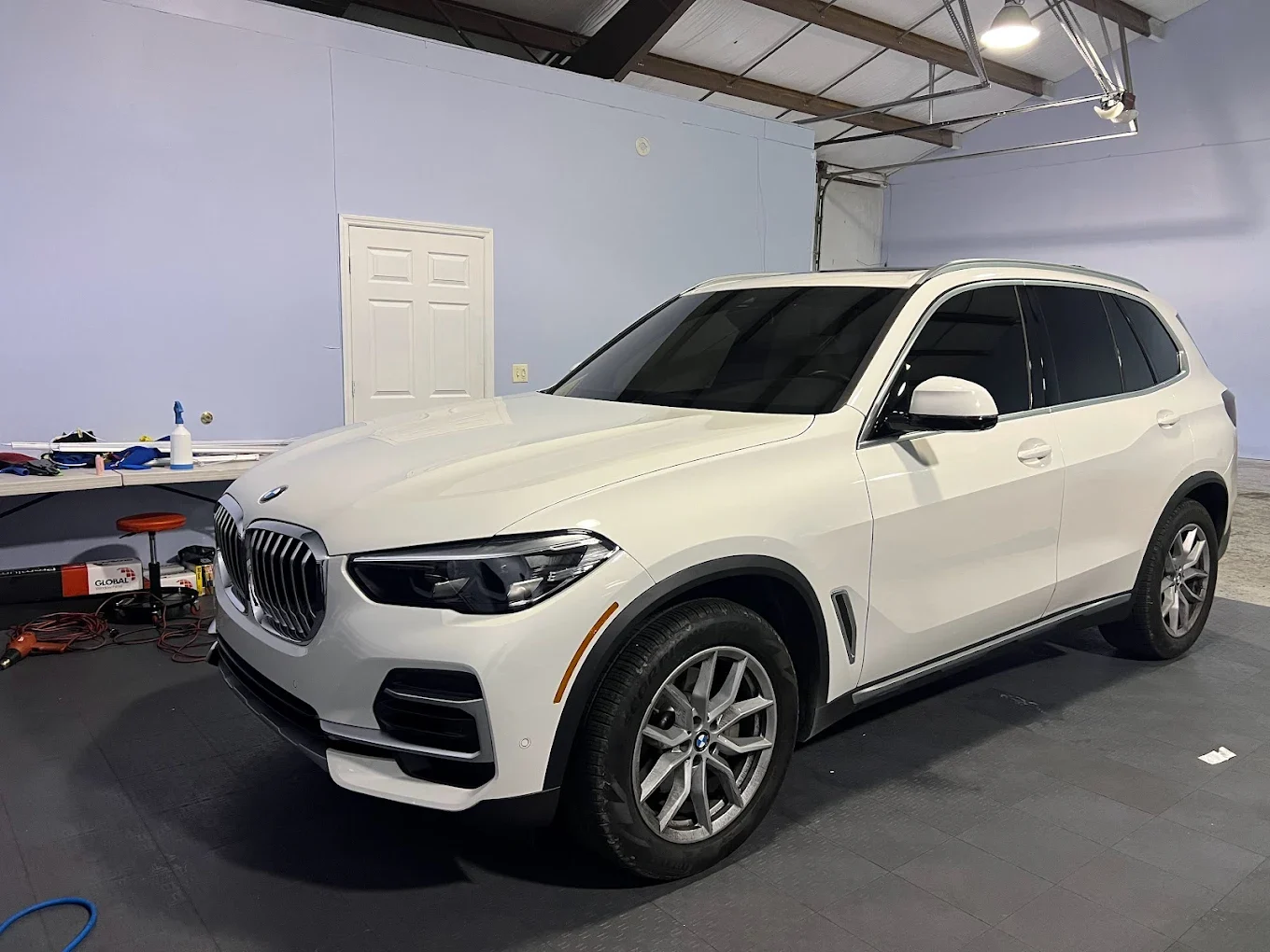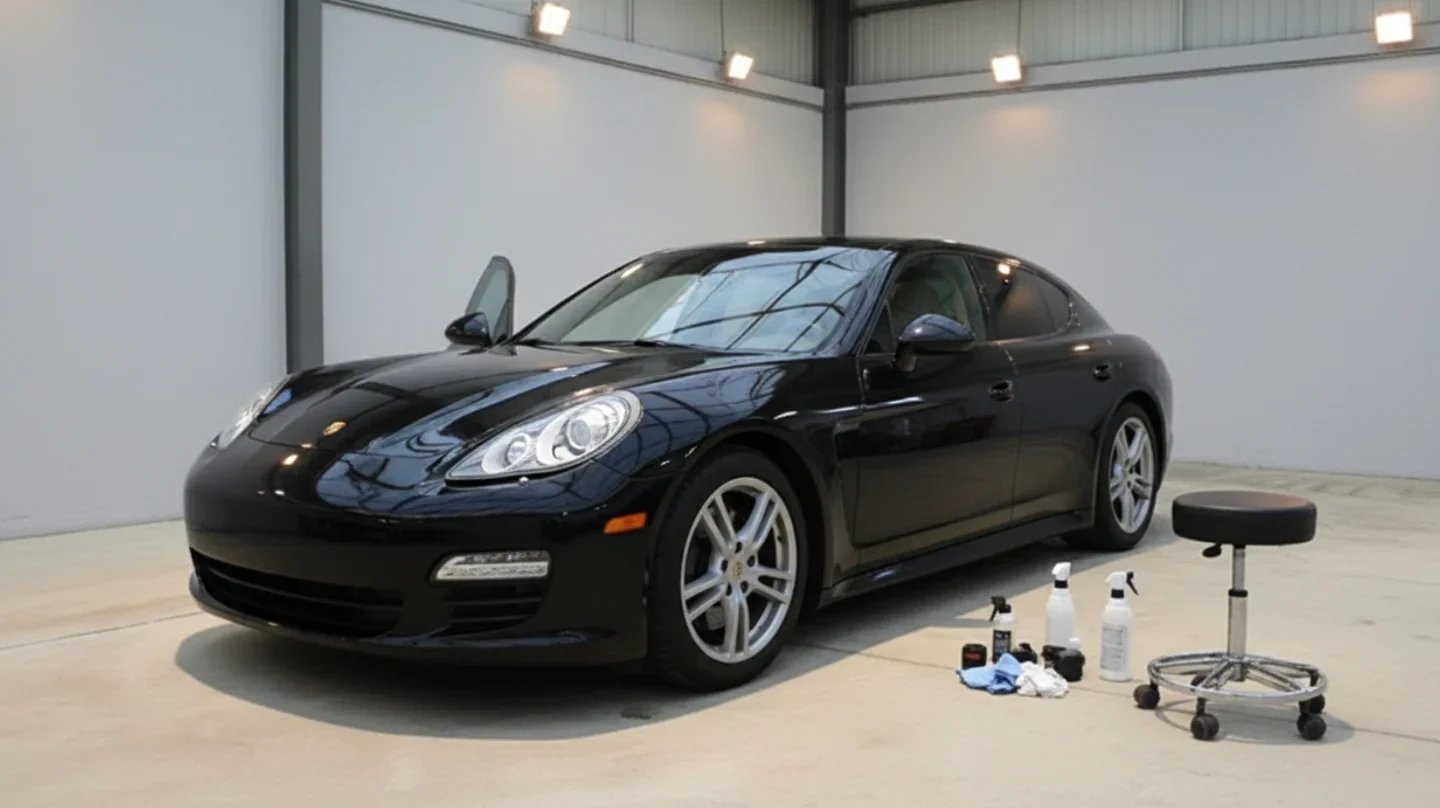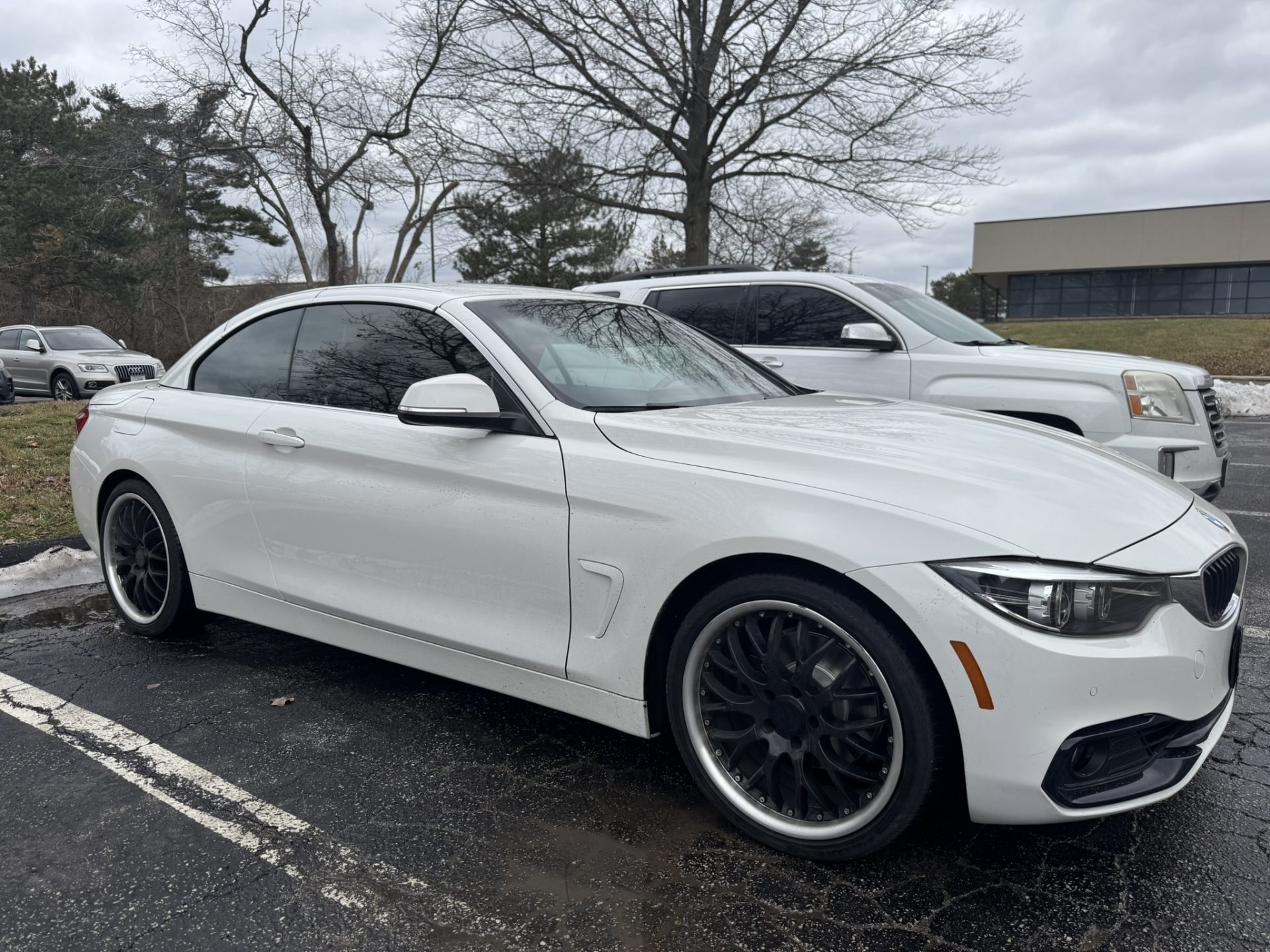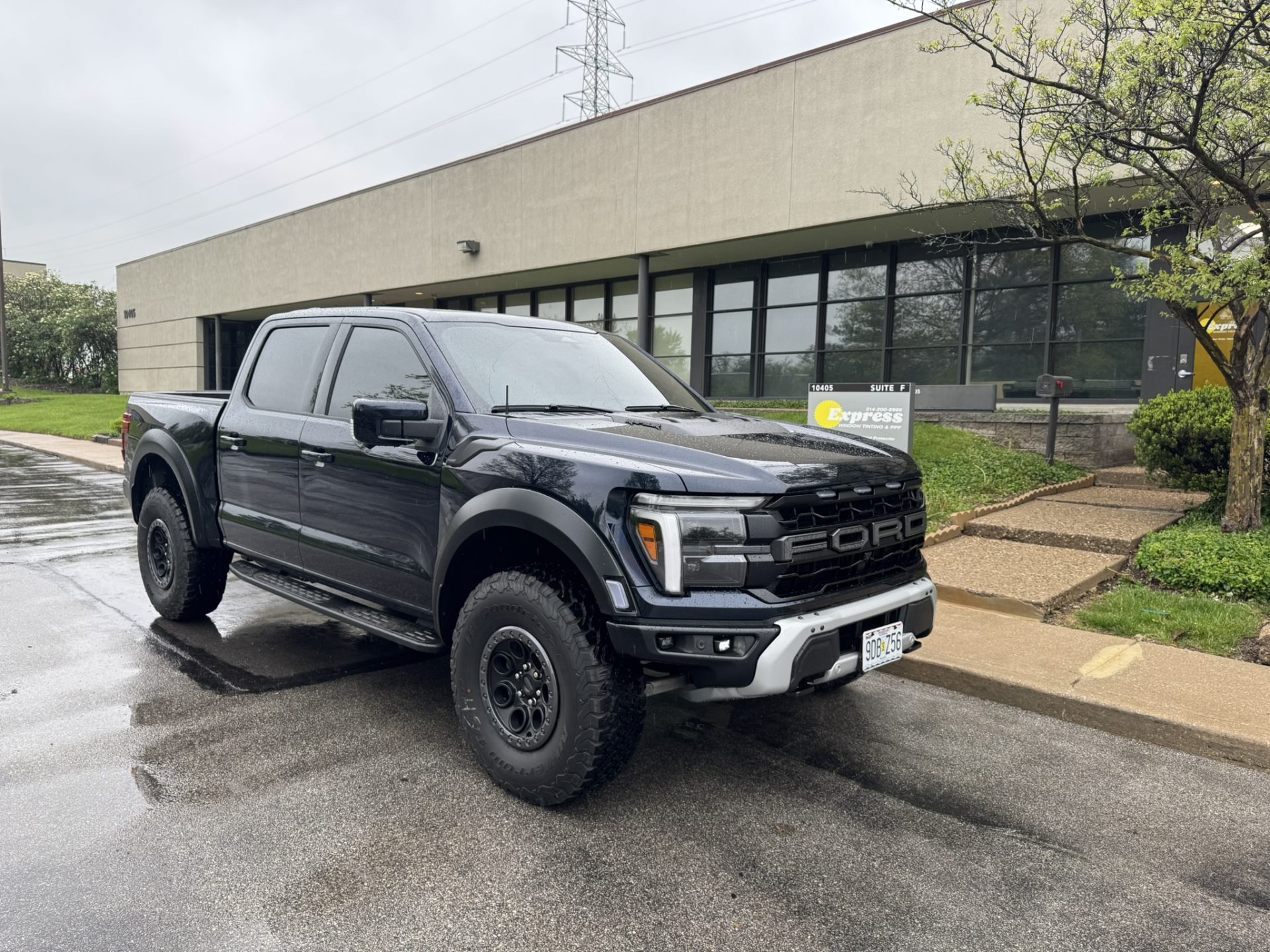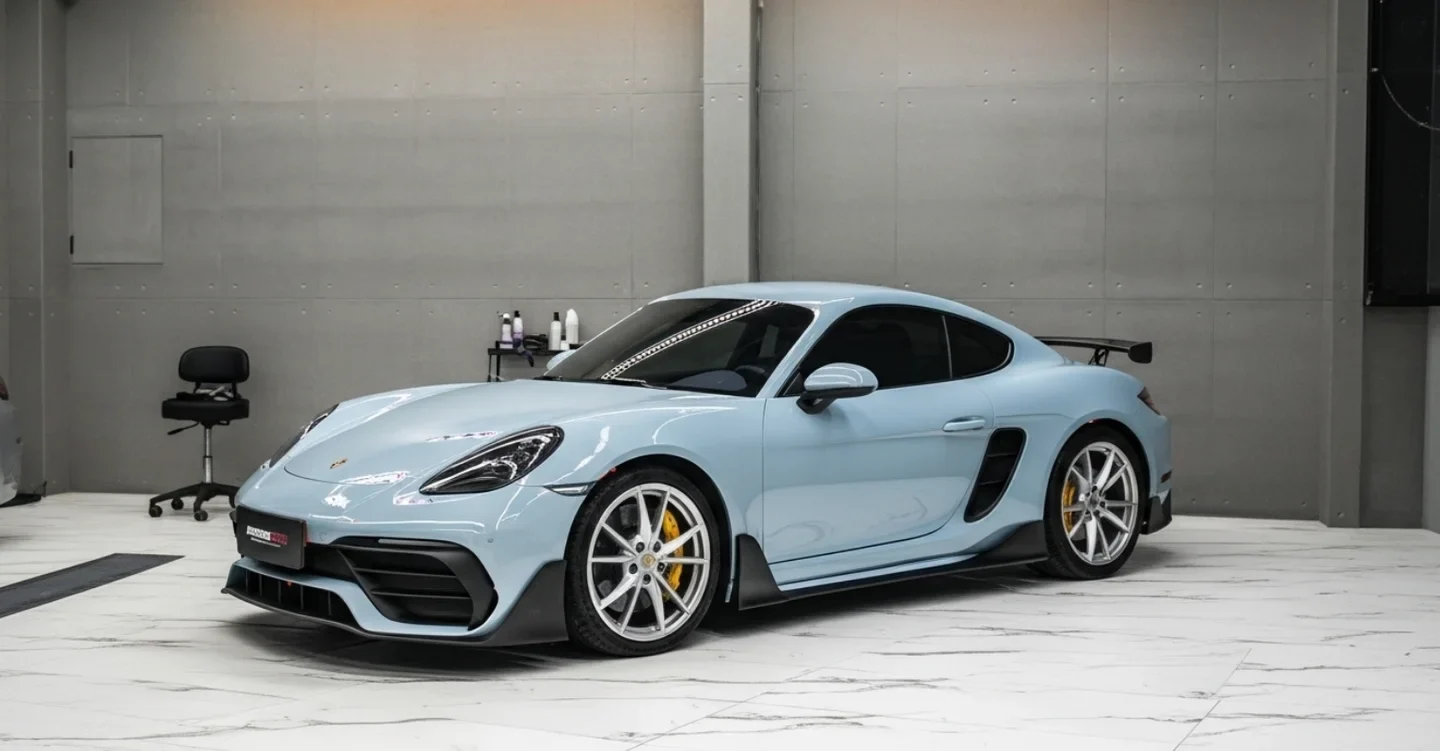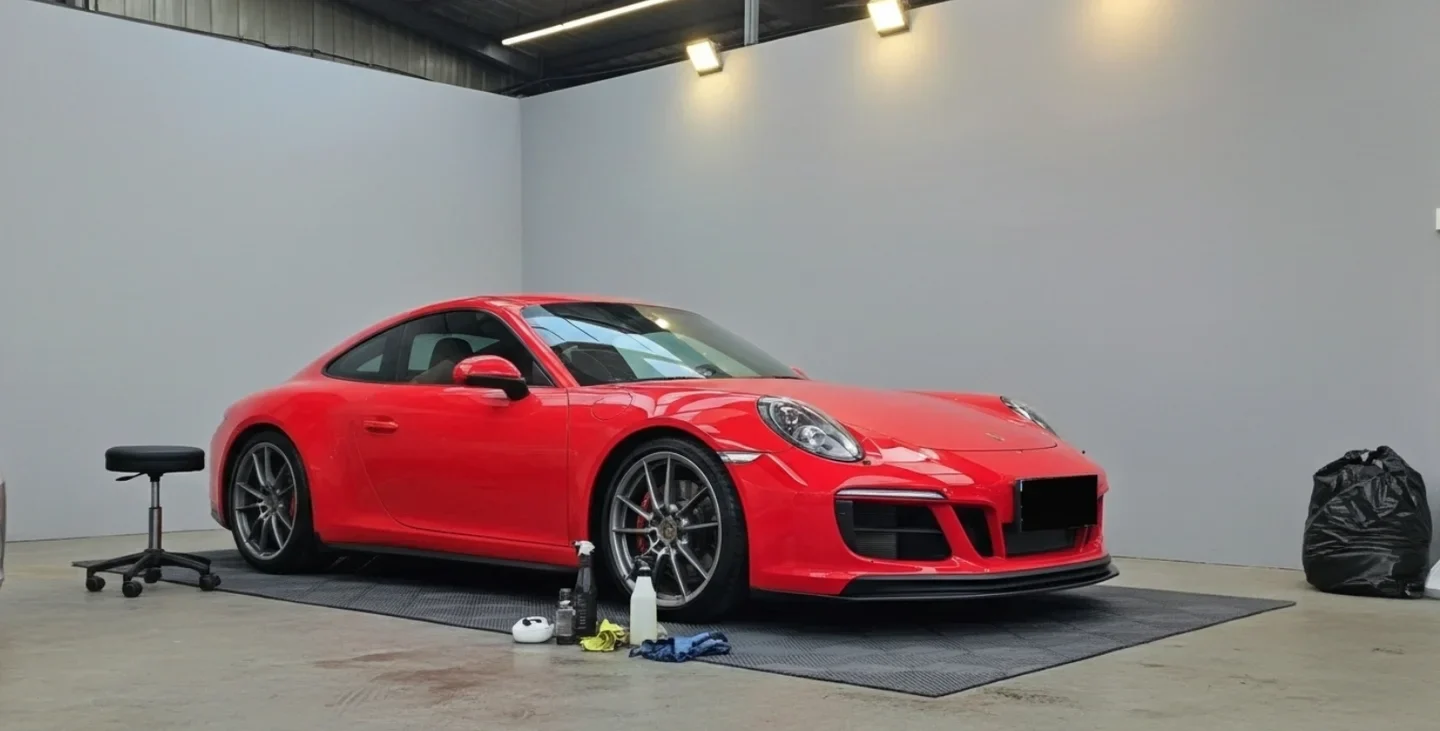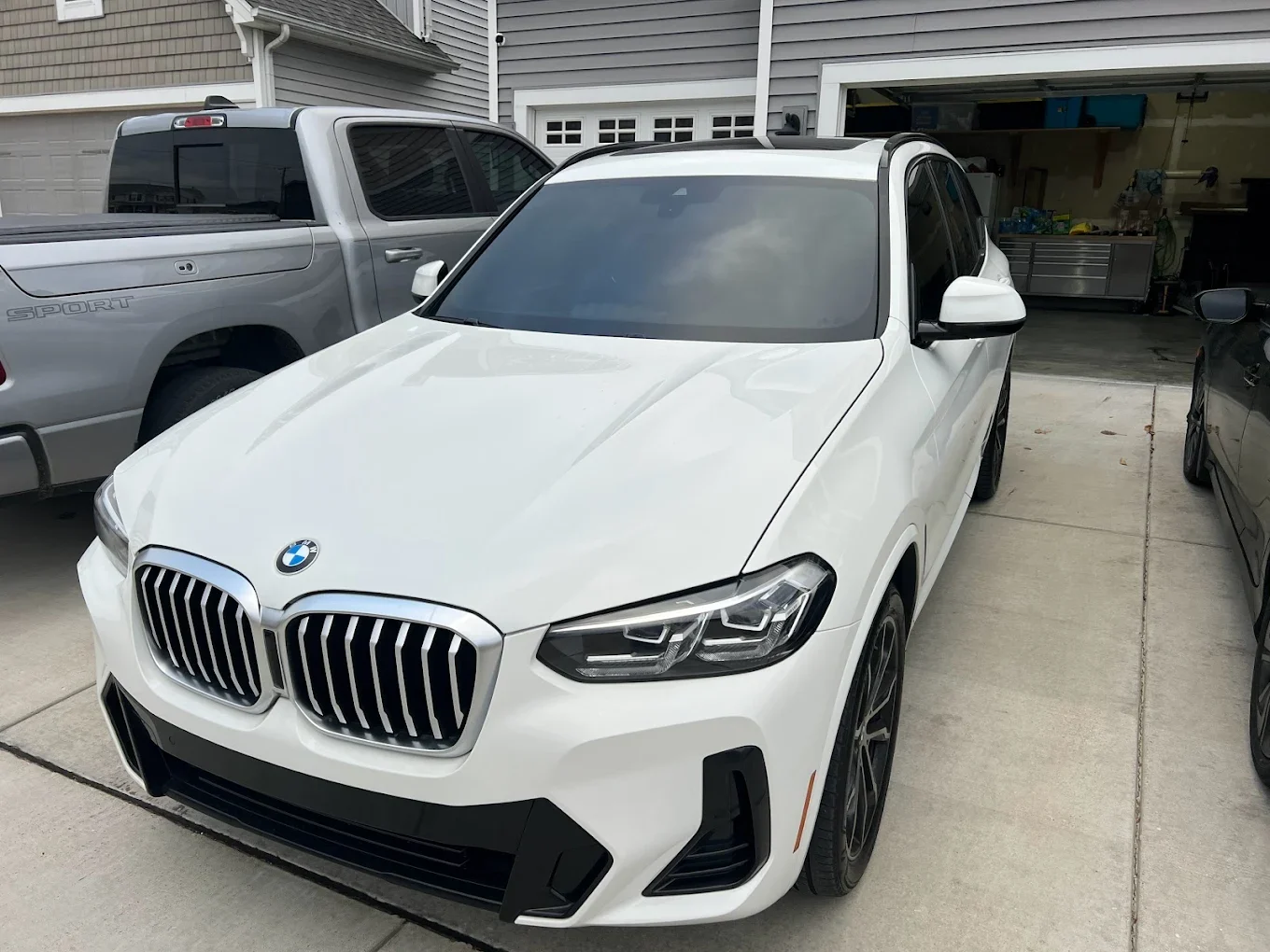When it comes to keeping your car’s paint flawless and protected, two technologies dominate the conversation: Paint Protection Film (PPF) and Ceramic Coating. But here’s the thing—while both protect your vehicle’s finish, they do so in entirely different ways.
At Express Window Tinting & Paint Protection, we help vehicle owners navigate this decision every day. Some drivers want to preserve a flawless factory finish, while others are looking for a low-maintenance way to keep their car glossy and easier to clean. The question isn’t just which one is better, but rather, which one is better for you?
This guide will give you a detailed breakdown of how both options work, how they differ, what they cost, and when it makes sense to use both.
Understanding the Basics: What Is Paint Protection Film (PPF)?
Paint Protection Film, often referred to as clear bra, is a durable, transparent urethane film that is applied to your vehicle’s painted surfaces. It’s designed to absorb physical damage and prevent your paint from being scratched, chipped, or stained.
This high-performance film has become a go-to solution for protecting new cars, luxury vehicles, and daily drivers that face harsh road conditions. What makes PPF truly special is its ability to:
- Resist rock chips and scratches
- Defend against bug splatter and tree sap
- Reduce damage from road salt, tar, and sand
- Prevent fading from harmful UV rays
- Self-heal minor swirl marks and light surface scratches when heat is applied
PPF is invisible when applied correctly, and it maintains your car’s original color and shine. At Express Window Tinting & Paint Protection, we use premium-grade films like Hitek and XPEL that come with warranties for long-term protection.
What Is Ceramic Coating and How Does It Work?
Ceramic coating is a liquid polymer that chemically bonds with your car’s clear coat to form a slick, protective, hydrophobic surface. It doesn’t physically shield your car like PPF does, but it adds long-term gloss, UV protection, and resistance against contaminants.
Once applied and cured, ceramic coating provides a hard, glass-like layer that:
- Repels water, mud, and grime
- Protects against bird droppings, acid rain, and tree sap
- Prevents oxidation and UV fading
- Enhances color depth and gloss
- Makes washing your car easier and less frequent
While ceramic coatings won’t stop rock chips or scratches, they’re ideal for anyone who values low maintenance and showroom-level shine.
PPF vs Ceramic Coating: Detailed Comparison Table
Let’s look at a side-by-side breakdown so you can see how each protection type stacks up.
| Category | Paint Protection Film (PPF) | Ceramic Coating |
| Protection Type | Physical defense against impacts and chips | Chemical resistance and surface protection |
| Scratch Resistance | High (self-healing film) | Low to moderate (resists swirl marks) |
| Water Repellency | Moderate (can be enhanced with ceramic topcoat) | Excellent (super-hydrophobic) |
| Gloss Enhancement | Moderate to high (depends on film type) | Very high (wet-look finish) |
| Lifespan | 5–10 years | 2–9 years |
| Maintenance | Easy | Very easy |
| Cost | Higher (due to labor and materials) | Lower upfront cost |
| Warranty Options | Often 5–10 years | Varies by product (up to 9 years) |
When Is PPF the Best Choice for Your Vehicle?
If your daily commute involves highways, gravel roads, or heavy traffic, Paint Protection Film is your best defense. It’s the only option that actually absorbs physical damage, meaning it can prevent rock chips, parking lot dings, and minor scuffs from damaging your paint.
Perfect for:
- Brand-new vehicles with factory-fresh paint
- High-end cars or exotic sports cars
- Vehicles that see long-distance or high-speed driving
- Off-road trucks and SUVs
With options like full-front wraps, partial wraps, or even full-body coverage, PPF offers flexible protection. At Express Window Tinting & Paint Protection, we tailor each film installation to the specific needs of your vehicle.
When Should You Choose Ceramic Coating Instead?
Ceramic coating shines in a different way—literally. If you’re someone who values a deep, glossy appearance and wants to spend less time washing and detailing, this is your ideal solution.
It’s especially great for garage-kept cars, weekend drivers, or newer vehicles where physical damage is less of a concern and ease of maintenance is a priority.
Best for:
- People who love a polished, high-gloss look
- Drivers who want fewer washes and easier cleaning
- Show cars or collector vehicles
- New vehicles with great paintwork already
Combining PPF and Ceramic Coating: The Ultimate Protection Strategy
Here’s where things get really interesting—you don’t have to choose just one. In fact, combining PPF and ceramic coating is a popular strategy that gives you the best of both worlds.
How does it work?
- PPF is applied to high-impact areas like the hood, bumper, fenders, and side mirrors.
- Ceramic coating is then applied over the entire vehicle, including the PPF.
This gives your vehicle full-body gloss and water resistance, while also ensuring that the most vulnerable parts are shielded from physical damage.
At Express Window Tinting & Paint Protection, we specialize in layered protection packages that combine both services for long-lasting value.
Cost Breakdown: What You Can Expect to Pay
Price is a major deciding factor for most car owners. Here’s a closer look at the estimated costs for each option.
Paint Protection Film Pricing:
- Partial Front Package (hood, fenders, mirrors): $900 – $1,500
- Full Front End: $1,500 – $2,500
- Full Vehicle Wrap: $4,000 – $7,000+
Ceramic Coating Pricing:
- Entry-Level Coating (1–2 years): $500 – $800
- Mid-Range (3–5 years): $1,000 – $1,500
- High-End (7–9 years): $1,800 – $2,500+
Keep in mind, these are professional installations that include proper surface prep, paint correction (if needed), and expert application.
Durability: How Long Do They Last?
Both PPF and ceramic coatings are designed to offer long-term value, but their durability depends on the product used, how the vehicle is maintained, and environmental conditions.
- PPF typically lasts 5 to 10 years, with premium films offering stain resistance and yellowing protection.
- Ceramic coatings last anywhere from 2 to 9 years, depending on how many layers are applied and how well you maintain it.
Regular washing, avoiding harsh chemicals, and performing annual inspections can help maximize the lifespan of either product.
Ease of Maintenance: Which One Is Lower Effort?
Ceramic coating wins when it comes to low maintenance. Its hydrophobic nature means water beads and rolls off easily, taking dirt and grime with it. You’ll spend less time at the car wash, and when you do wash, it’s faster and more effective.
PPF is also easy to clean, but it can be prone to light staining or bug splatter if not paired with a ceramic topcoat. That’s why we often recommend applying a coating on top of PPF for added ease of care.
Do PPF or Ceramic Coatings Change the Appearance of My Car?
Not at all—unless you want them to. Both products are designed to be invisible when installed correctly.
PPF is available in glossy or matte finishes, so if you want to give your car a stealthy, satin look, that’s an option too.
Ceramic coating enhances whatever paint color you already have. It doesn’t alter the color but makes it look deeper, richer, and more vibrant.
Installation Process: What to Expect
PPF Installation Steps:
- Vehicle is thoroughly washed and decontaminated.
- Paint correction is performed if needed.
- PPF is precision-cut and applied to each panel.
- Edges are tucked and sealed.
- Film is allowed to cure for 24–48 hours.
Ceramic Coating Installation Steps:
- Wash, clay bar, and polish the paint to perfection.
- Surface is cleaned with an alcohol-based solution.
- Coating is applied section by section.
- Curing process begins and may take 12–24 hours.
- Vehicle should avoid moisture for 1–2 days post-application.
Both services are best handled by trained professionals with the tools and experience to ensure perfect results.
Warranty Options and What They Cover
At Express Window Tinting & Paint Protection, we stand behind the work we do.
- PPF warranties typically cover 5 to 10 years, protecting against bubbling, peeling, yellowing, and delamination.
- Ceramic coating warranties vary from 1 to 9 years, depending on the product, and typically cover issues like loss of hydrophobic properties or oxidation.
Always ask about the warranty terms before booking your installation—it’s an important part of your investment.
Conclusion: Which One Should You Choose for Your Vehicle?
The decision between PPF and ceramic coating isn’t always black and white. It depends on how you use your car, how long you plan to keep it, and what kind of protection matters most to you.
- Choose PPF if your top priority is impact resistance and you want to protect your paint from physical damage.
- Choose ceramic coating if you value a mirror-like finish, water repellency, and easier maintenance.
- Choose both if you want the most complete protection available today.
At Express Window Tinting & Paint Protection, we offer honest guidance and expert installations. Whether you’re protecting a brand-new Tesla, your daily SUV, or a classic car, we’ll help you choose the perfect solution.
FAQs – PPF vs Ceramic Coating
1. Can PPF and ceramic coating be applied together?
Yes, and it’s a common practice. PPF protects from physical damage, while ceramic coating enhances shine and ease of maintenance. Together, they offer the best of both worlds.
2. Does ceramic coating prevent rock chips like PPF?
No, ceramic coatings are not designed to stop rock chips or deep scratches. Only PPF provides physical protection against impact.
3. How do I maintain my vehicle after getting ceramic coating or PPF?
Use pH-neutral car shampoos, avoid automatic car washes with brushes, and dry with clean microfiber towels. Consider annual inspections for best results.
4. Will either product affect the factory paint warranty?
No. Both PPF and ceramic coatings are safe for factory paint and will not void warranties when installed by certified professionals.
5. Is there a break-in period after installation?
Yes. Avoid washing your car or exposing it to rain for the first 48 to 72 hours after ceramic coating or PPF installation to allow full curing.


